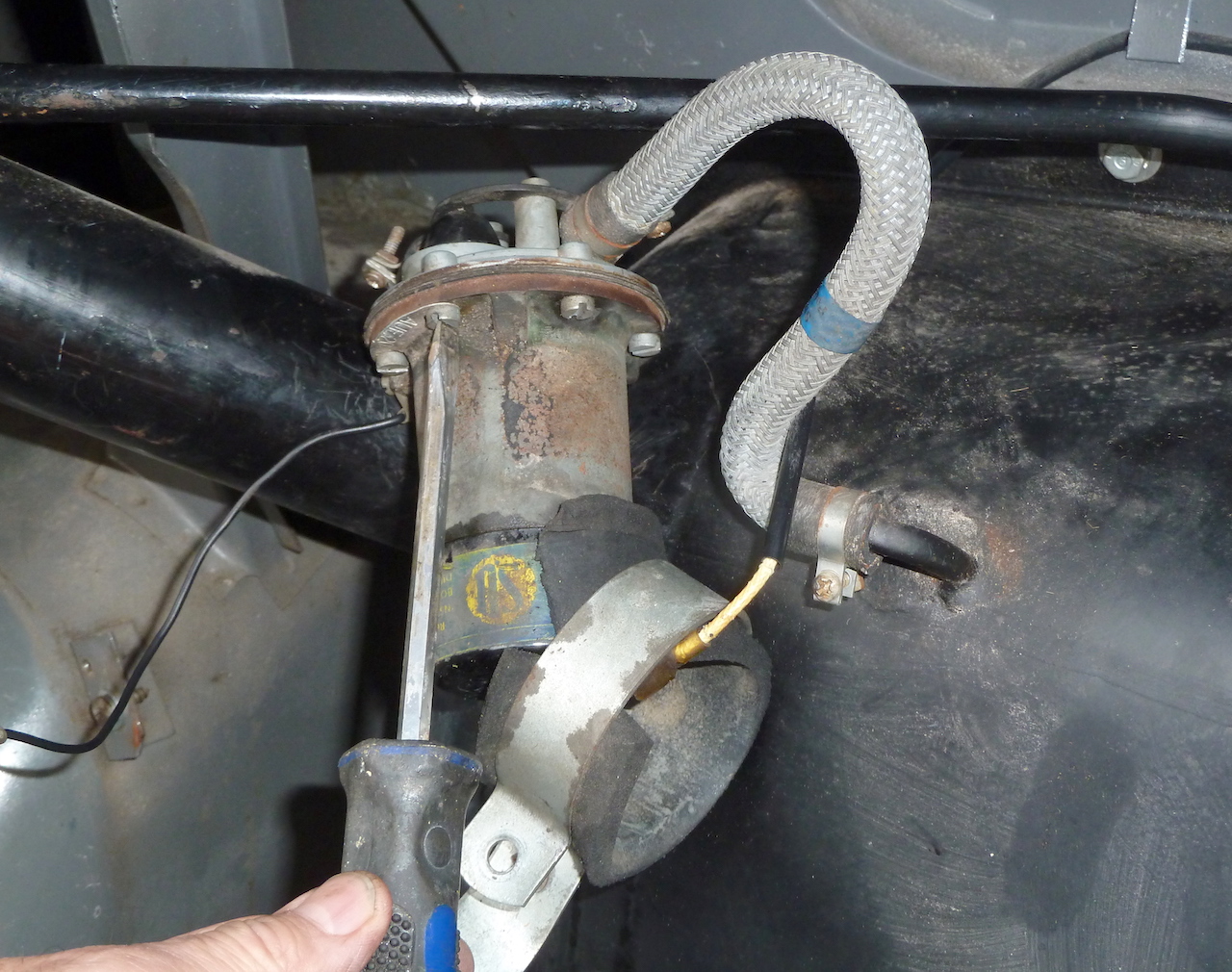 S.U. electric petrol pumps, used on many classic vehicles, usually survive and operate for many years, but potentially dangerous fuel leaks can develop…
S.U. electric petrol pumps, used on many classic vehicles, usually survive and operate for many years, but potentially dangerous fuel leaks can develop…
Kim Henson advises making frequent, regular inspections – for safety and reliability.
S.U. petrol pumps have been giving sterling service for many decades on a wide variety of classic cars and light commercials, including Morris Minors, MGs galore, and BMC’s ‘Farina’ mid-range models (A55, A60 and equivalent vehicles).
In time, the contact points can become dirty/pitted, eventually causing the pump to stop operating until they are cleaned or renewed. However, another more serious problem that can occur, and that can be potentially dangerous in terms of a fire or explosion risk, is petrol leakage at the pump.
On Wheels-Alive we have often covered the serious risks for classic cars associated with the imminent increase in quantities of ethanol being used in unleaded fuel (please search ‘ethanol’ on this website to take you to the series of in-depth articles on this subject written by Dave Moss). Even with typical current levels of five per cent of ethanol in petrol, problems are already arising due to deterioration within/breakdowns of fuel hoses and other components.
The advice, then, is to inspect all aspects of the fuel system on a very frequent basis, and to renew old hoses that pre-date the ‘ethanol era’, with the latest type of fuel tubing that is more resilient (again, further details in Dave Moss’s articles). Expensive, yes, but so is a fire… Check too the fuel pump, also the carburettor(s)/fuel injection system, looking for any signs of deterioration.
Note that fuel system specialists (and some owners’ clubs) can supply ethanol-proof replacement components for many popular classic models.
Back to the S.U. fuel pump… Regardless of ethanol, in time, leaks can occur from the hoses and their unions at the pump, and these are usually easy to fix. However, in addition, the ring of securing screws situated around the pump body of a typical S.U. pump, and holding the two main sections of it together, can loosen a little in time, resulting in fuel weeping in quantity. I have never seen this written about, but it can and does happen.
On some models such as the Morris Minors, in which the pump is mounted under the bonnet, inspections are easily and quickly carried out. For other cars such as the BMC mid-range Farinas, also many MGs, the pump is located at the rear of the vehicle, either within the luggage boot (as with the Farinas) or underneath the car (many MGs).
The first thing that the driver may notice is a strong smell of petrol, and on the Farina range, especially evident if the boot lid is opened. On these models the pump is mounted adjacent to the fuel tank, within the front part of the boot and hidden by a screw-on trim panel. The pump can only be seen and properly inspected if the panel is unscrewed and removed. This takes a few minutes but is well worthwhile for peace of mind.
The other day I encountered a Farina saloon that was smelling strongly of petrol. In fact, on opening the boot it was clear that the floor of the compartment was awash… When the air had cleared and the trim panel was removed it became clear that petrol was leaking from the pump body when the engine was running, rather than the hoses and unions (although these were checked and the union clips re-tightened as a matter of course). By the way it is usually considered easier to remove the pump to fully access the unions, than to try to reach them with the pump in place.
One more aspect to check on these Farina models (and indeed all classics) is the gasket – often made of cork – that seals around the petrol tank sender unit. The screws securing the sender unit may need to be tightened as well, and/or a new gasket obtained and installed. Again, on the Farinas, the sender unit and its gasket can only be accessed while the luggage boot’s forward trim panel is out of the way, so this job is best done at the same time as checking the pump and hoses.